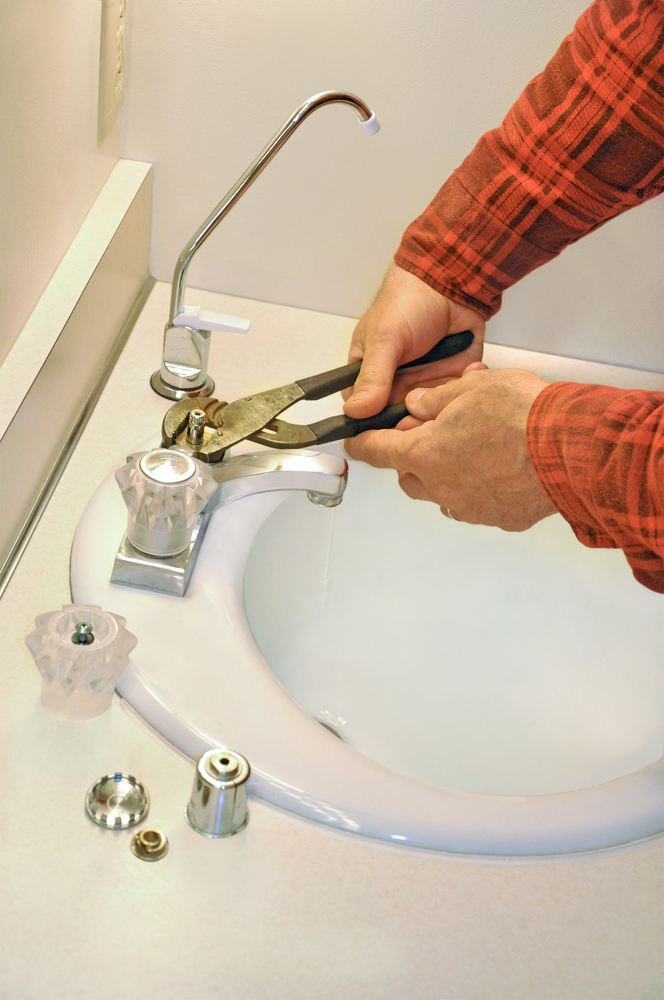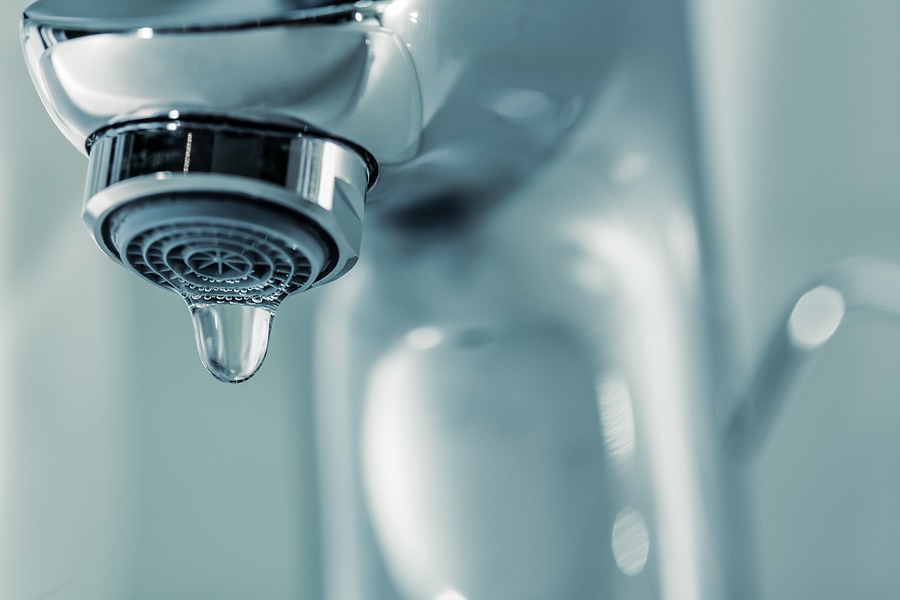Discovering the Value of Fixing a Dripping Faucet
Discovering the Value of Fixing a Dripping Faucet
Blog Article
We have come across this great article on Why It's Important to Fix Leaky Faucets listed below on the internet and accepted it made sense to relate it with you on this site.

Dripping taps could look like a small hassle, yet their impact exceeds just the aggravation of the sound. From wasting water to sustaining unnecessary monetary prices and health risks, neglecting a trickling faucet can lead to various repercussions. In this write-up, we'll delve into why it's important to resolve this usual house issue immediately and properly.
Wastefulness of Water
Ecological Influence
Trickling faucets contribute considerably to water waste. According to the Epa (EPA), a solitary tap trickling at one drip per secondly can waste more than 3,000 gallons of water each year. This not just pressures water sources but also affects communities and wildlife based on them.
Financial Expenses
Boosted Water Expenses
Beyond the environmental impact, dripping faucets can inflate water bills substantially. The accumulated wastage over time converts right into greater utility expenses, which could have been avoided with prompt fixings.
Possible Property Damages
Moreover, long term trickling can cause damage to components and surface areas surrounding the faucet. Water accumulation can create discoloration, deterioration, and also architectural problems if left ignored, resulting in added repair service prices.
Wellness Worries
Mold and Mold Development
The constant presence of dampness from a leaking faucet produces an optimal environment for mold and mildew and mildew development. These fungis not only endanger indoor air quality yet likewise pose health and wellness threats, especially for individuals with breathing problems or allergies.
Waterborne Diseases
Stationary water in trickling faucets can come to be a breeding place for bacteria and various other microorganisms, raising the danger of waterborne conditions. Impurities such as Legionella bacteria prosper in stationary water, potentially leading to severe illnesses when consumed or breathed in.
Do it yourself vs. Specialist Repair service
Advantages and disadvantages of Do It Yourself Repair
While some might try to fix a leaking tap themselves, DIY repair services come with their own collection of obstacles. Without proper understanding and tools, DIY attempts can worsen the concern or result in incomplete fixings, prolonging the issue.
Advantages of Working With a Professional Plumber
Employing a specialist plumber ensures that the underlying source of the dripping faucet is attended to properly. Plumbings possess the experience and equipment to diagnose and repair faucet problems effectively, saving time and reducing the danger of more damages.
Step-by-Step Overview to Dealing With a Dripping Tap
Devices Called for
Before attempting to fix a dripping tap, gather the required tools, including an adjustable wrench, screwdrivers, replacement parts (such as washers or cartridges), and plumber's tape.
Common Faucet Issues and Their Solutions
Identify the sort of tap and the certain problem triggering the drip. Typical problems include worn-out washing machines, rusty shutoff seats, or malfunctioning O-rings. Describe maker directions or online tutorials for detailed advice on fixings.
Safety nets
Routine Maintenance Tips
To prevent trickling taps, do regular maintenance such as cleaning aerators, checking for leaks, and replacing damaged components quickly. Additionally, consider mounting water-saving gadgets or upgrading to more reliable fixtures.
Significance of Prompt Fixes
Attending to dripping faucets as quickly as they're discovered prevents more water waste and potential damages, ultimately conserving both water and money in the future.
Effect On Residential Property Value
Perception of Well-Maintained Building
Preserving a residential or commercial property in good condition, consisting of dealing with upkeep problems like trickling faucets, boosts its perceived worth and charm among prospective buyers or occupants.
Influence on Resale Worth
Properties with properly maintained plumbing fixtures, consisting of taps, command greater resale values in the realty market. Addressing leaking taps can contribute to a favorable impression during building evaluations and arrangements.
Environmental Responsibility
Private Payment to Conservation
Taking obligation for dealing with dripping taps aligns with wider efforts toward water preservation and ecological sustainability. Every person's activities collectively make a significant impact on maintaining precious sources.
Sustainable Living Practices
By prioritizing punctual repair work and embracing water-saving behaviors, people contribute to sustainable living practices that benefit both present and future generations.
Final thought
Resolving a trickling tap goes beyond simple comfort; it's an important step toward saving water, minimizing monetary expenses, and guarding wellness and home. Whether via do it yourself fixings or specialist aid, doing something about it to fix dripping taps is a tiny yet impactful method to promote accountable stewardship of resources and contribute to a healthier, more sustainable future.
How to Fix a Leaky Faucet: Step-by-Step Repair Guide
A leaky faucet may seem like a simple annoyance, but if it's not fixed promptly, that leak could cost hundreds to potentially thousands. From water damage to mold, mildew, and high water bills, even a tiny leak can be catastrophic if left unattended. Damage like this can even affect the overall value of your home, so it's important to take the right approach for leaky faucet repair. You may need the help of a plumber in some cases, but we've got a few tips you can try on how to fix a leaky faucet before calling the pros.
Four Faucet Types
When you're learning how to fix a leaky faucet, the first step is knowing what kind of faucet you're working with! There are four common types.
Cartridge Faucets
Cartridge faucets come in one- or two-handled varieties. In one-handled cartridge faucets, hot and cold water combines in a single cartridge. In the two-handled versions, hot and cold water are controlled separately and mixed in the faucet.
Ball Faucets
Ball faucets have a single lever you push up and down to adjust the pressure and rotate to change the temperature. A slotted metal ball controls the amount of water allowed into the spout.
Compression Washer Faucets
They're the oldest type of faucet, but they're still used in many homes — especially older ones. Compression faucets have two separate handles that, when turned, raise or lower the washer that seals a water valve. This valve stops water from flowing through the faucet when it is turned off.
Disc Faucets
Disc faucets rarely need to be repaired due to their maintenance-free design. The water flow is controlled by two discs — the upper one raises and lowers against a fixed lower disc, creating a watertight seal. If your disc faucet starts leaking, you may need to replace the seals or clean residue buildup from the inlets.
Fixing a Leaky Faucet
Step 1: Turn Off the Water
Whether you're learning how to fix a leaky bathtub faucet or how to fix a leaky kitchen faucet, always turn off the water supply to your working area when you're fixing a leak. The last thing you want is a flood added to your list of things to fix.
Look for the shutoff valves below your sink or around the tub and turn them clockwise to stop the water flow. If your faucet doesn't have shutoff valves, you may need to turn off the water for the whole house. Check to make sure it's off by turning the faucet on. If nothing comes out, you're ready to start the repair.
Step 2: Take Apart the Faucet
How you disassemble your faucet depends on the type of fixture you have. You can use a flathead screwdriver to remove the caps on top of the handle or handles for cartridge and compression faucets. Inside, you should see handle screws. Unscrew these with a screwdriver to remove the handle.
Disc- and ball-style faucets will typically have an inlet screw near the handle, and removing that will reveal the interior of the faucet.
Detach the Valve Stem
For cartridge- and compression-style faucets, you'll see the inner valve stem or cartridge once you remove the faucet handles. If you have a compression faucet, unscrew the brass valve stem. If you have a cartridge faucet, pull out the cartridge. If your cartridge has been in place for a while, it may require some tools or extra force to remove it due to mineral deposits.
Examine and Replace Parts
Once you've removed the parts, check them out to confirm what needs to be replaced. You may see corroded rubber washers, O-rings, stems, or cartridges. On a ball-style faucet, check the seats and springs for damage.
If you need to repair a leaky disc faucet, check the inlet and seals on the lower disc.
Once you determine what parts must be replaced, visit your local hardware store. Bring the damaged parts with you to ensure you can purchase the correct components to replace them.
Clean Valves and Faucet Cavity
If you've removed a stem or cartridge, you may notice mineral buildup in the faucet's threads. Use white vinegar to clean the valve seat by soaking it for a few minutes, then scrub it away with a soft toothbrush and rinse with warm water. You can also clean the interior of the faucet in the same way.
Reassemble the Faucet
Once your faucet is cleaned and the required parts have been replaced, it's time to reassemble it. Put the pieces back together and slowly turn the water supply back on. Doing this slowly is crucial because too much initial water pressure can damage the new hardware you've just installed.
https://homewarranty.firstam.com/blog/how-to-fix-leaky-faucet

As a keen reader on Should I Repair or Replace a Leaky Faucet?, I figured sharing that piece of content was mandatory. Sharing is nice. One never knows, you may be doing someone a favor. Bless you for being here. Come back soon.
Report this page